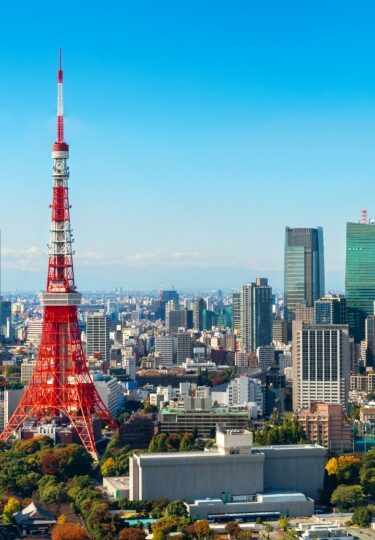Japan, an archipelago of thousands of islands, is a fountain of ancient culture mixed in with the glittering neon lights of modernity. During your search for the best cities in Japan, you’ll discover shrines, temples, blazing illumination come nightfall, and a thrum of high-tech contemporary life, as well as dense urban centers, often surrounded by gorgeous mountains.
As you travel, the idiosyncratic cultural quirks of Japan’s different cities will demonstrate just how diverse the Land of the Rising Sun can be.
Here are 10 of the best cities to visit in Japan.
Tokyo
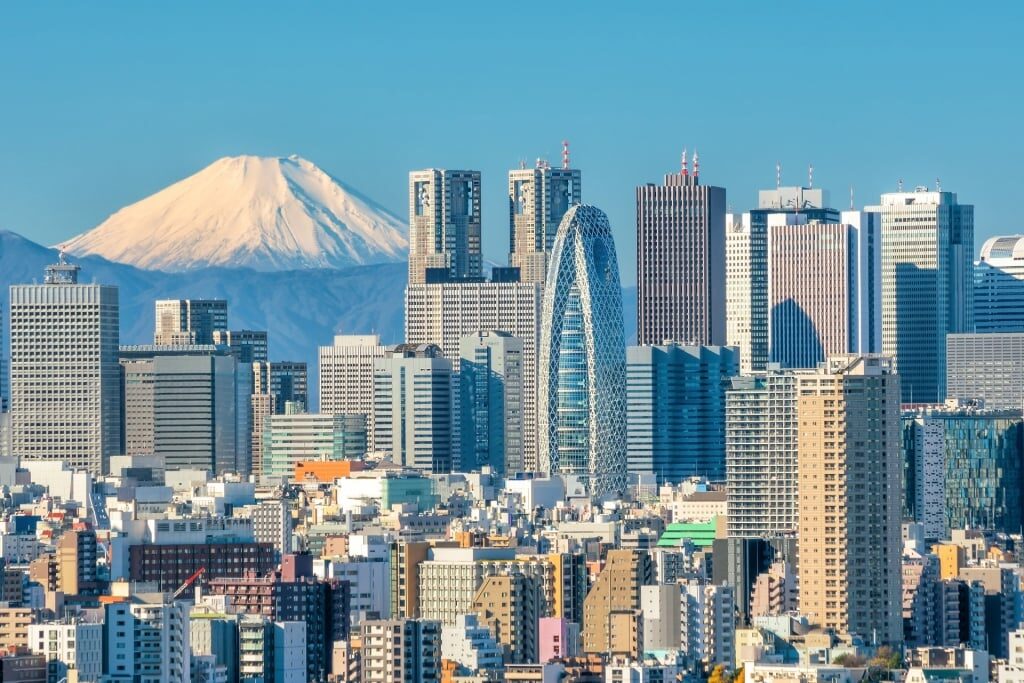
Tokyo
Tokyo, the national capital, on the main island of Honshu, is one of the best cities to visit in Japan. The city itself has a population of around 14 million, with the greater metropolitan area clocking in at a whopping 37 million souls.
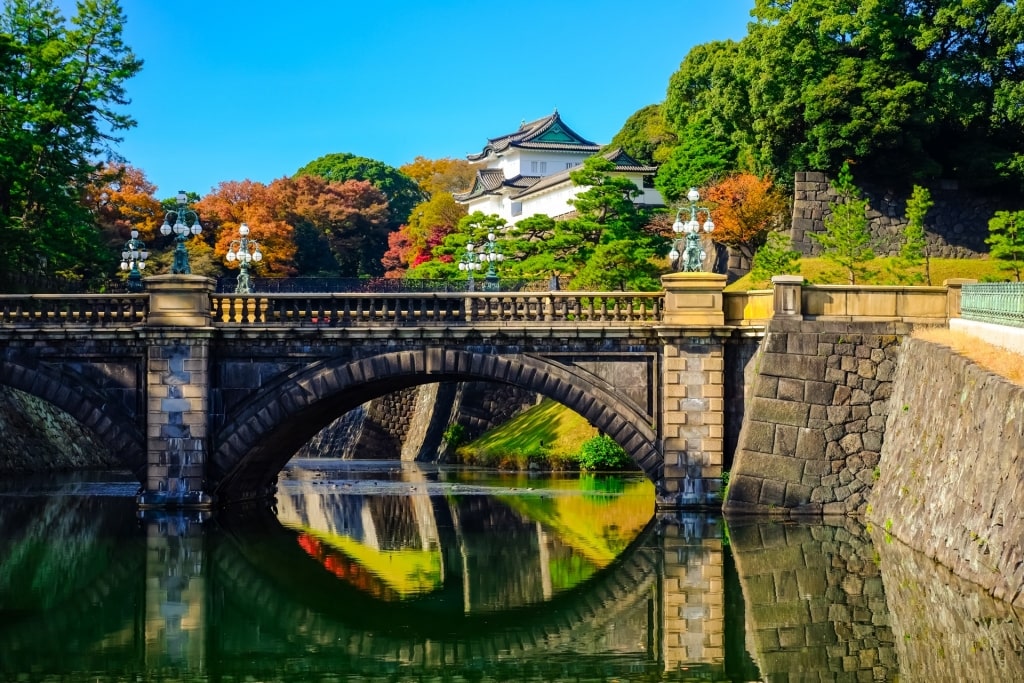
Imperial Palace, Tokyo
Glowing neon radiance, skyscrapers, Buddhist temples, fish markets, and more await you in this dazzling futuristic city.
Highlights include taking the city in from above on the observation deck of the Eiffel Tower-esque Tokyo Tower and surveying the greenery of the Imperial Palace’s exquisite gardens and surrounding moats.
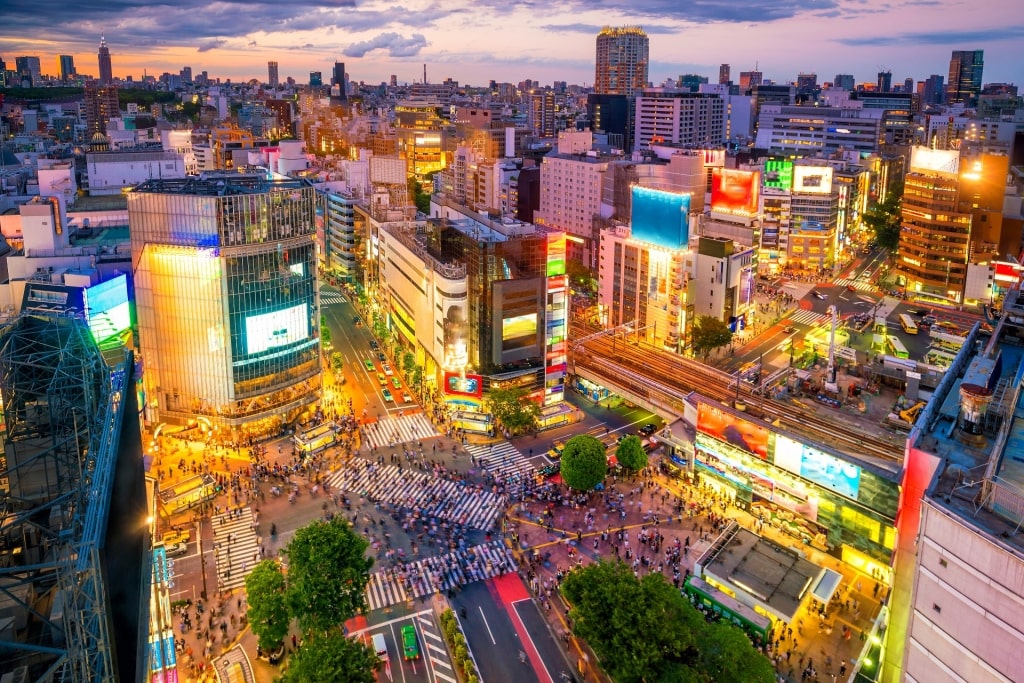
Shibuya Crossing, Tokyo
Of course, you don’t want to miss the world-famous Shibuya Crossing. The crossing, in the city center, is where multitudes stream over this multi-directional intersection every day.
Bodies scoot across the road in a chaotic, yet functional symphony, which takes place below tall buildings with giant screens secured to their façades.
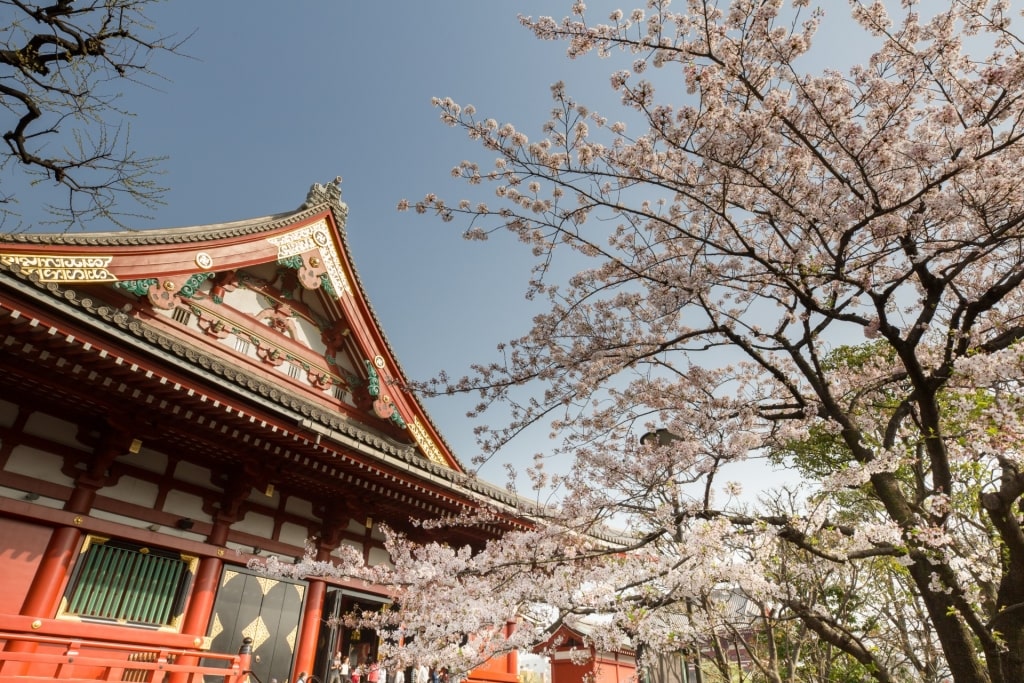
Senso-ji Temple, Tokyo
Other spots of note include the ancient Senso-ji Buddhist temple, built around the year 645; the exquisite landscaped Shinjuku Gyoen Garden; the Shinjuku entertainment and shopping district; plus the upscale shopping area of Ginza, one of the best neighborhoods in Tokyo.
Whether you’ve come for the culture, cuisine, clothing, or gadgets, Tokyo is a massive city that will keep you spellbound.
Yokohama
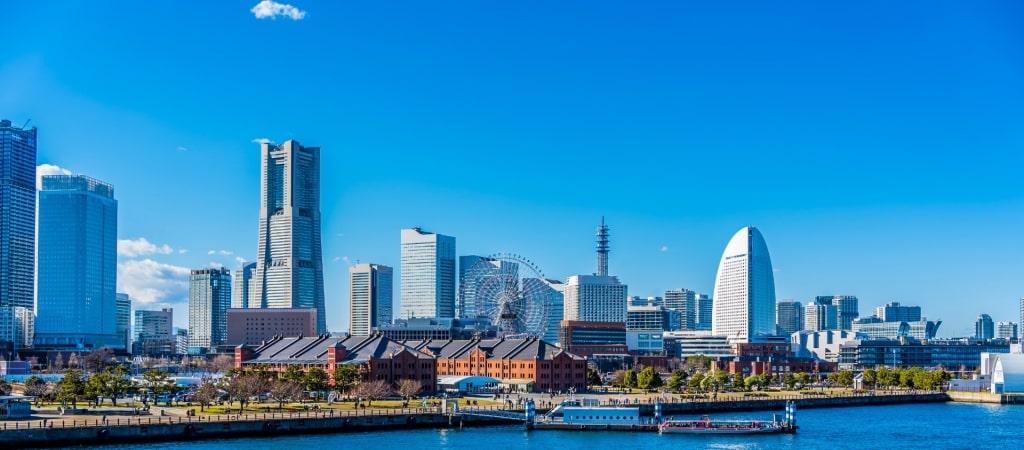
Yokohama
Technically, the Tokyo metropolitan area is known as Tokyo-Yokohama. Most people consider Yokohama a separate city adjacent to Tokyo proper, or an enormous metropolitan suburb of the capital.
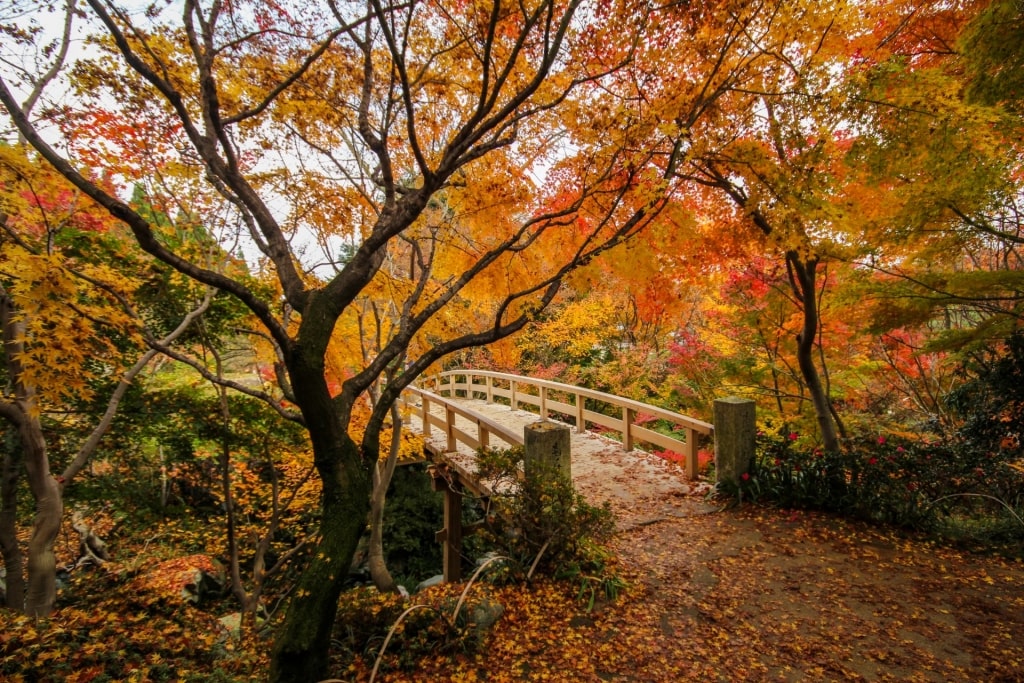
Sankeien Garden, Yokohama
While visiting Yokohama, take a break from the buzz of urban life with a promenade around the calming Sankeien Garden, with abundant greenery, tea houses, and water features to put your soul at ease.
Yokohama was one of the first ports opened to foreign trade, with a not-so-gentle push from Commodore Perry of the American Navy in 1853. The city also hosts Japan’s largest Chinatown, along with the Western-inspired, tree-lined Nihon Odori avenue, both perfect for morning or afternoon walks, and exploring.
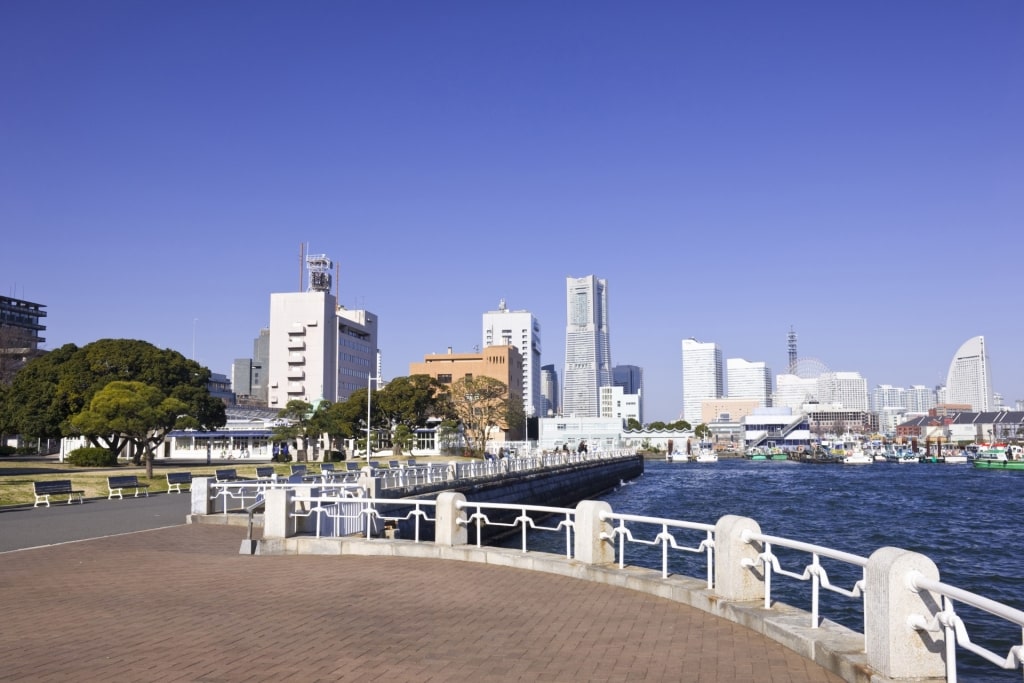
Yamashita Park, Yokohama
On the waterfront, Yamashita Park, with its long promenade, is ideal for more rambling, and for a better view of Yokohama Port.
Noodle lovers should check out the Shin-Yokohama Ramen Museum, with a painted sky overhead, where you can sample a variety of ramen dishes, and learn more about the culture that inspired these tasty noodles.
Osaka
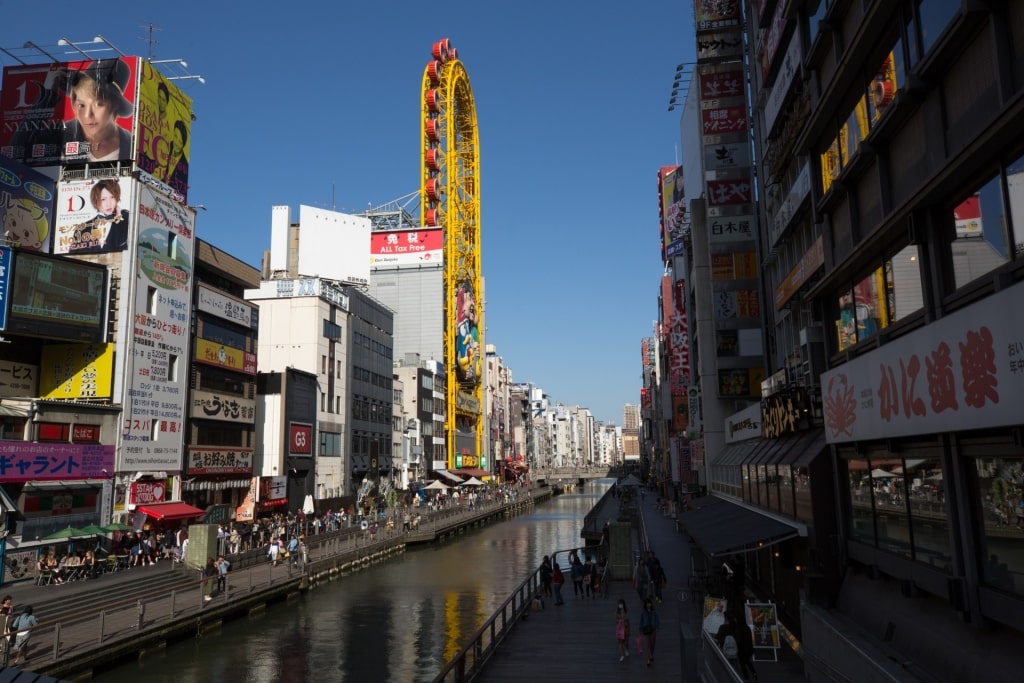
Dotonbori, Osaka
After Tokyo and Yokohama, Osaka is Japan’s third-largest urban center. Osaka, numbered among the best cities to visit in Japan, is a must for anyone obsessed with futuristic-looking neon cityscapes.
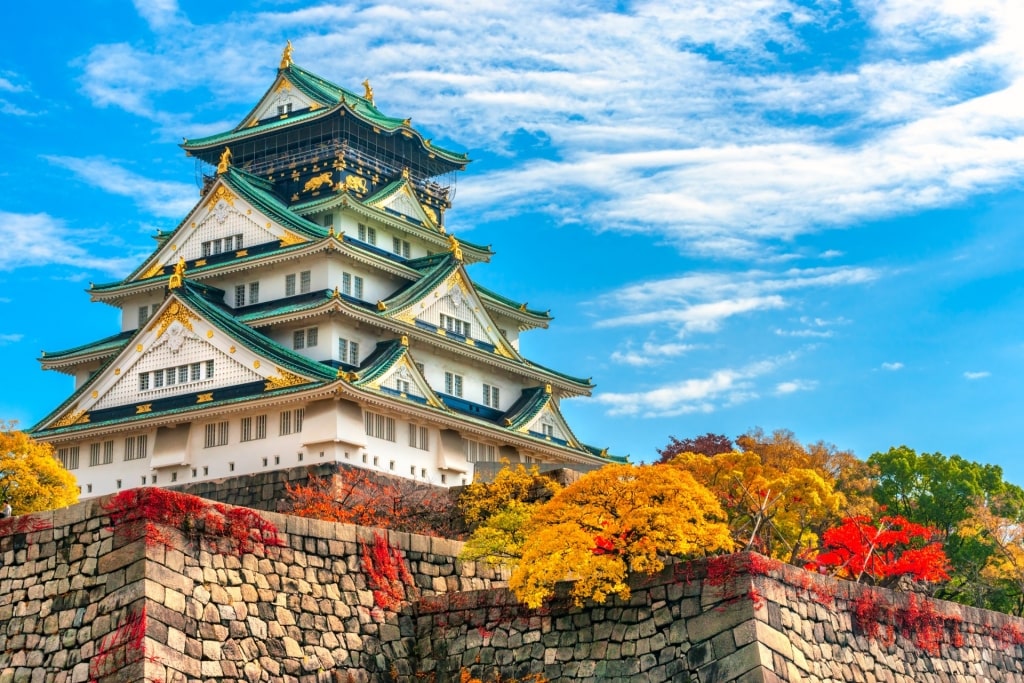
Osaka Castle, Osaka
Southwest of Tokyo on Honshu Island, Osaka blends the old in with the new. From the twin skyscrapers, linked via a sky bridge, with their “floating” garden observatory to the lovely cherry trees surrounding Osaka Castle, built in 1583, it’s easy to see how the ancient world melds with contemporary life in this bustling city.
Osaka has two major centers; Minami in the south, and the Kita district, or Umeda, in the north. Minami is a sparkling hub where you can dig into the city’s laid-back street food scene, with a profusion of spots to eat stacked along both sides of the Dotonbori-gawa river.
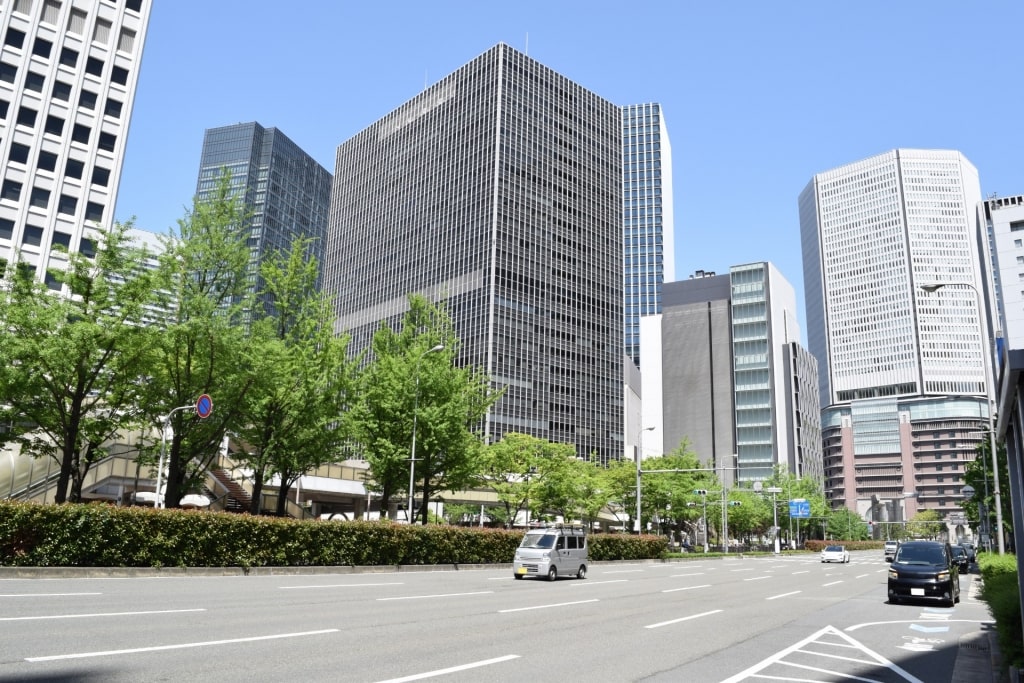
Umeda
Umeda, a business and entertainment district, has plenty of dining options for you to indulge in as well, along with department stores and an abundance of shopping opportunities.

Shitennō-ji, Osaka
If the city rush begins to overwhelm you, you can find some tranquility at Shitennō-ji, one of Japan’s oldest Buddhist temples, with its eye-catching red and white five-story pagoda. The nearby Gokuraku-jodo Garden, built to mimic a heavenly paradise on earth, is another serene spot.
Read: What Is Osaka Known For?
Kyoto
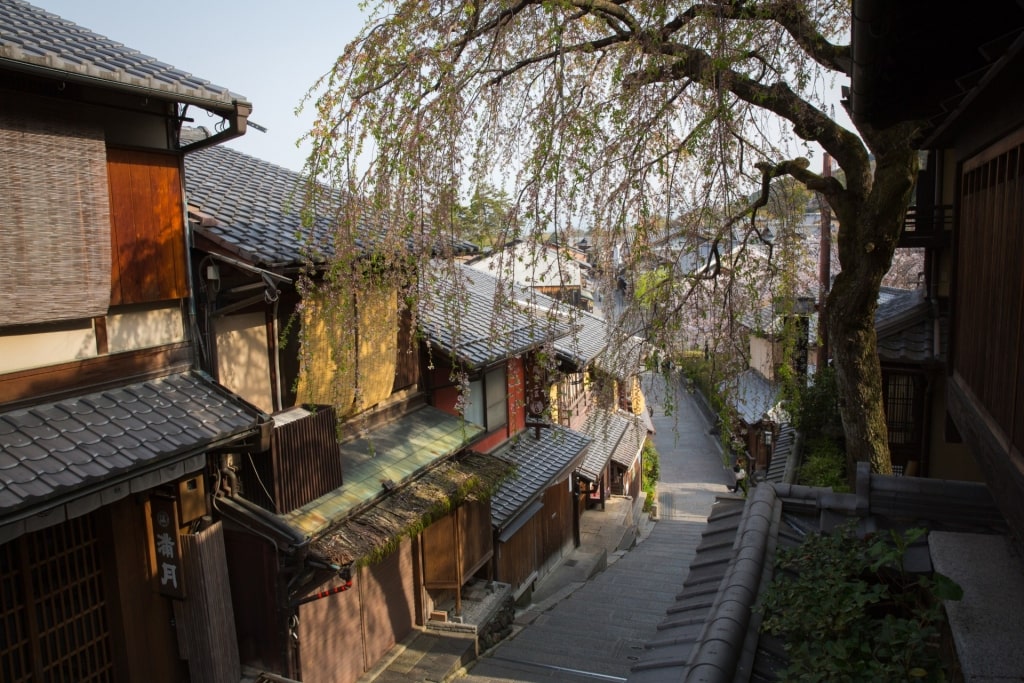
Kyoto
The easy-going ambiance of Kyoto—often referred to as the nation’s cultural capital, or the capital of peace and tranquility—will offer you a stark contrast to Japan’s megacities.
Kyoto’s restful atmosphere stems from its well-preserved heritage. You’ll stumble across many traditional gardens in Kyoto, and thousands (yes, you read that number right) of Buddhist temples and Shinto shrines.
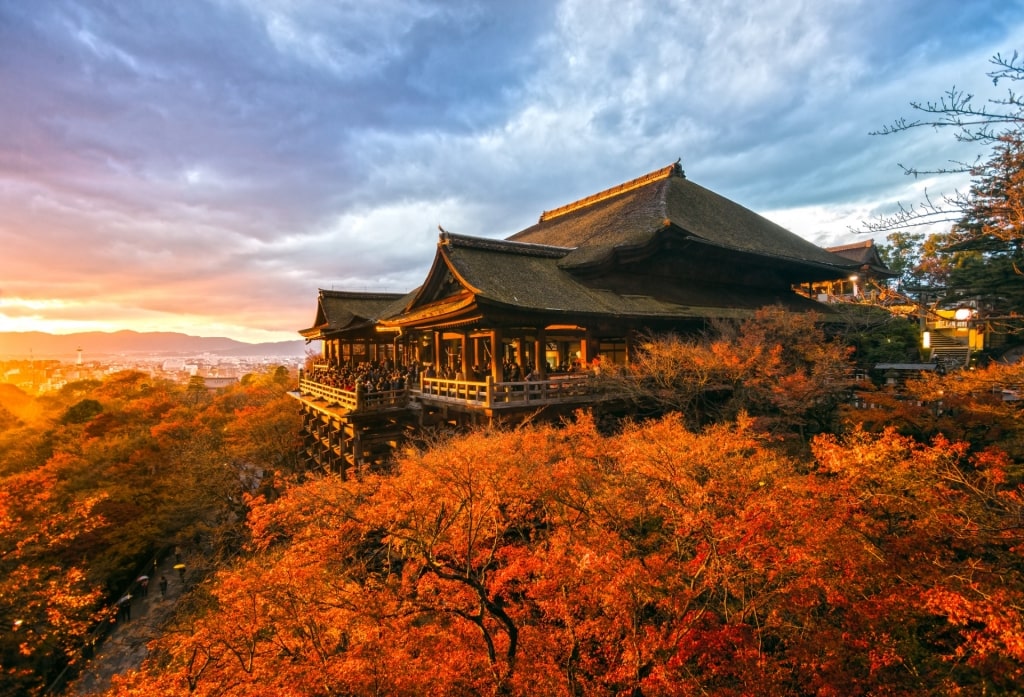
Kiyomizudera Temple, Kyoto
Other things to do in Kyoto include the Buddhist Sanjusangendo temple, of the Rengeo-in monastery, which houses 1,001 golden statues of Kannon, the goddess of mercy. You can also head up the forested hillside to Kiyomizudera Temple for its large wooden terrace, with sweeping views of the woodlands and city below.
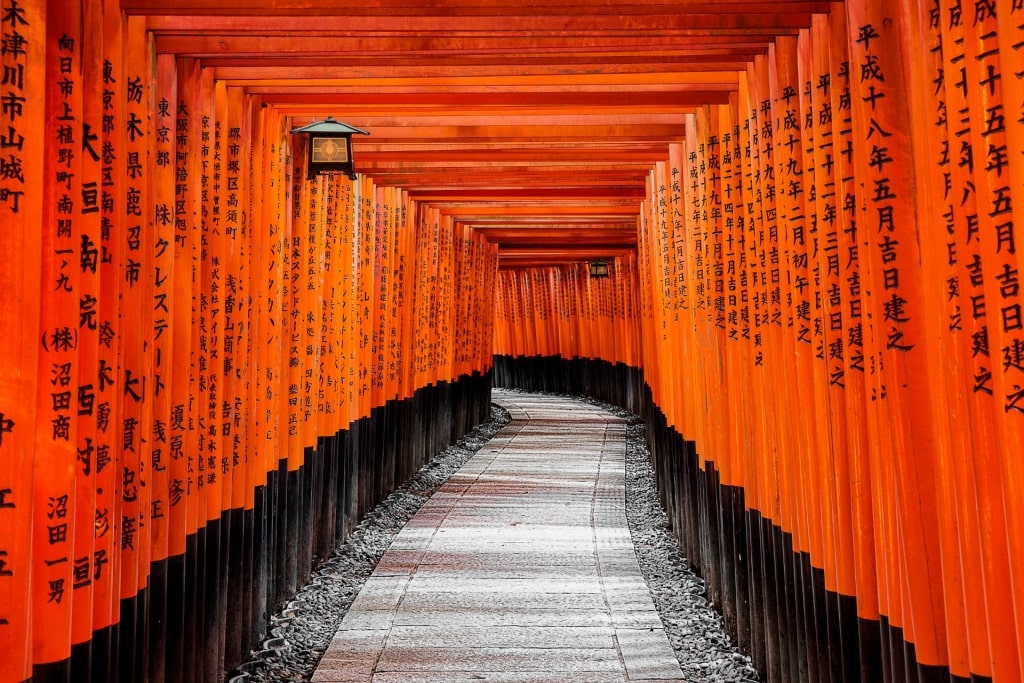
Fushimi Inari Taisha Shrine, Kyoto
Kyoto, Japan’s former capital, is home to Fushimi Inari Taisha Shrine, renowned for its thousand-strong orange torii gate tunnel, which leads toward the ancient Heian-period shrine.
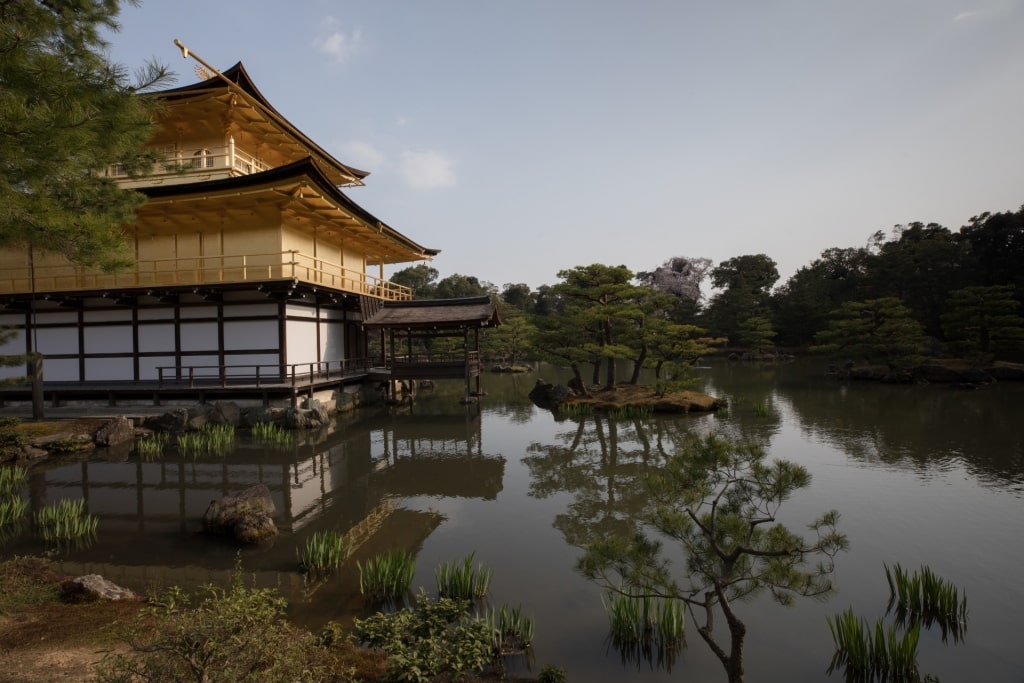
Kinkakuji Golden Pavilion, Kyoto
Another spot worth visiting is the Kinkakuji Golden Pavilion, one of the most famous temples in Japan, covered in reflective gold leaf. The handsome pavilion is surrounded by trees and overlooks a tranquil pond.
Nature, culture, and spiritualism balance together amazingly well in the gardens and temples of Kyoto, making it one of the most unique cities in all of Japan.
Read: Two Days in Kyoto
Kobe
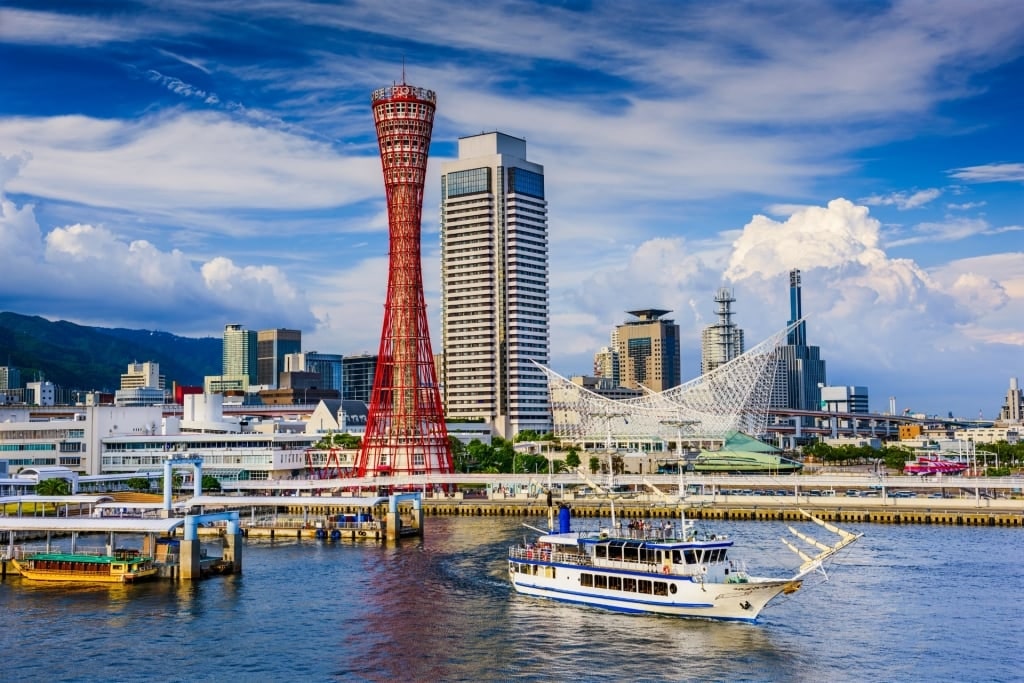
Kobe
Just west of Osaka lies Kobe, one of the prettiest cities in Japan. Kobe, on Osaka Bay, comes with all of the conveniences of modern life but is somewhat less frantic in character than neighboring Osaka.
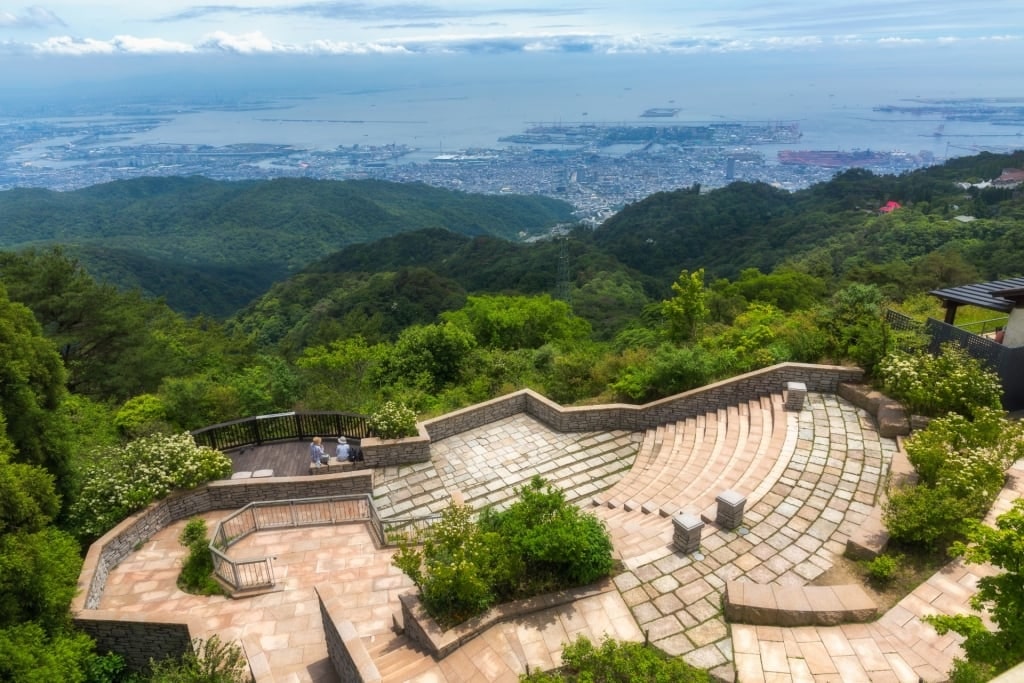
Rokko Mountain, Kobe
Kobe is fairly compact and immensely walkable. For a bird’s-eye view of the city, one of the best things to do in Kobe is to ride the Shin-Kobe Ropeway up the slopes of the Rokko Mountain, with vistas of Nunobiki waterfall.
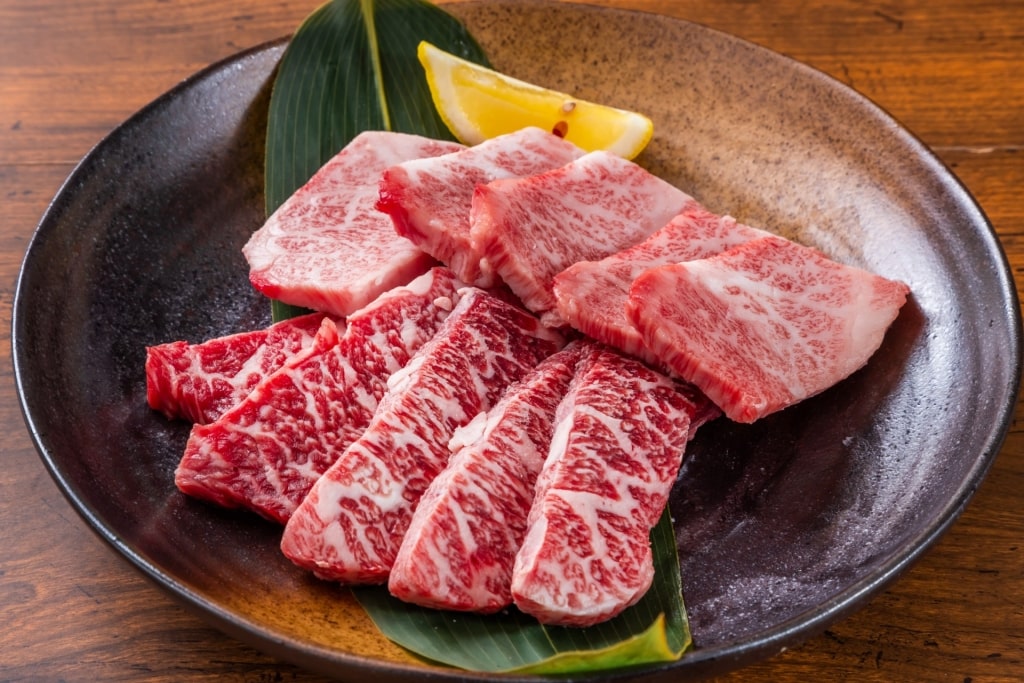
Kobe beef
If you’re a dedicated carnivore, sample some famed Kobe (wagyu) beef, which hails from the region, at a local restaurant. You can also swing by the fashionable Sannomiya-Motomachi district, with Japanese food, luxury shopping, and a surfeit of entertainment options to keep you occupied.
When it’s time to unwind with a drink in hand, visit the Nada district, celebrated for its sake production. A few of the local breweries even offer sake museum tours.
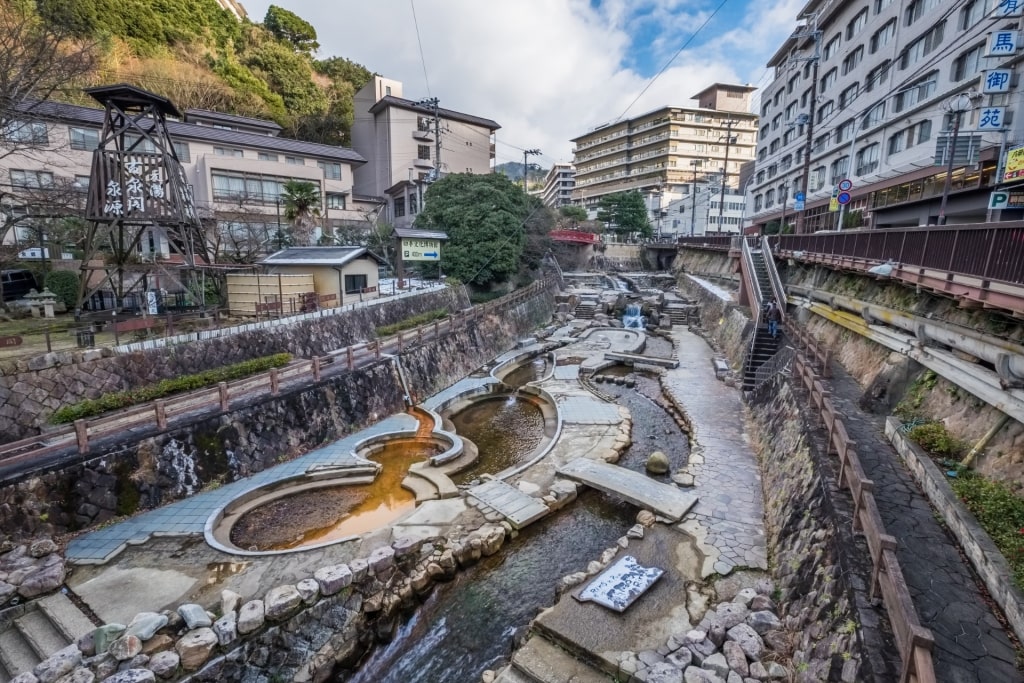
Arima Onsen, Kobe
And for some deep relaxation, drop by Arima Onsen, an enchanting hot spring village inside Kobe’s city limits. You can enjoy the serene mountain setting at this retreat and the soothing comfort of the thermal baths.
Sapporo
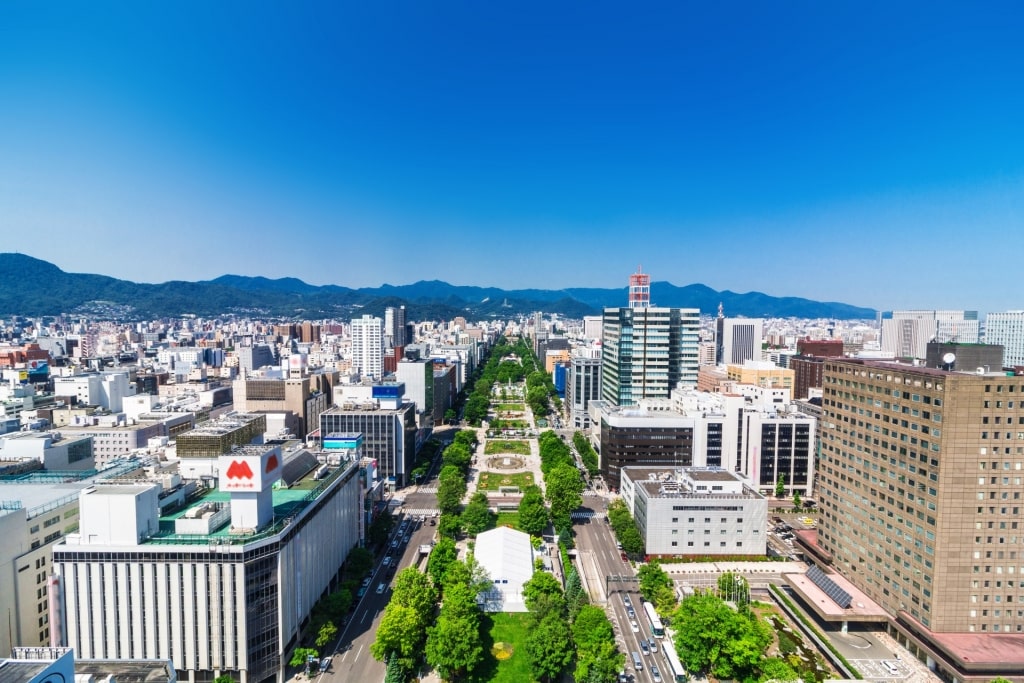
Odori Park, Sapporo
Sapporo, capital of Hokkaido Island, garnered global recognition after hosting the 1972 Winter Olympic Games.
Due to Sapporo’s northern latitude, snow and ice have great meaning here, as demonstrated by the annual Sapporo Snow Festival’s marvelous ice sculptures.
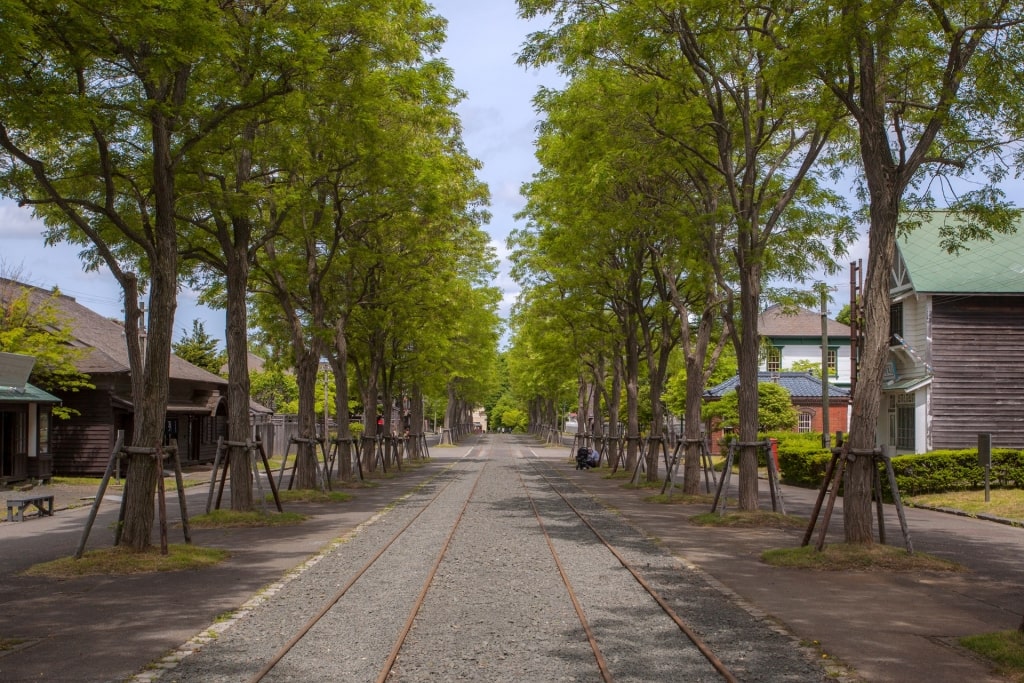
Historic Village of Hokkaido
Other noteworthy sites, not necessarily dependent on snowfall, include the open-air Historic Village of Hokkaido, with its restored Meiji and Taisho Period buildings.
Odori Park, a strip of land bisecting the city into northern and southern halves, is a pleasant stretch of green that’s fun to wander around as well.
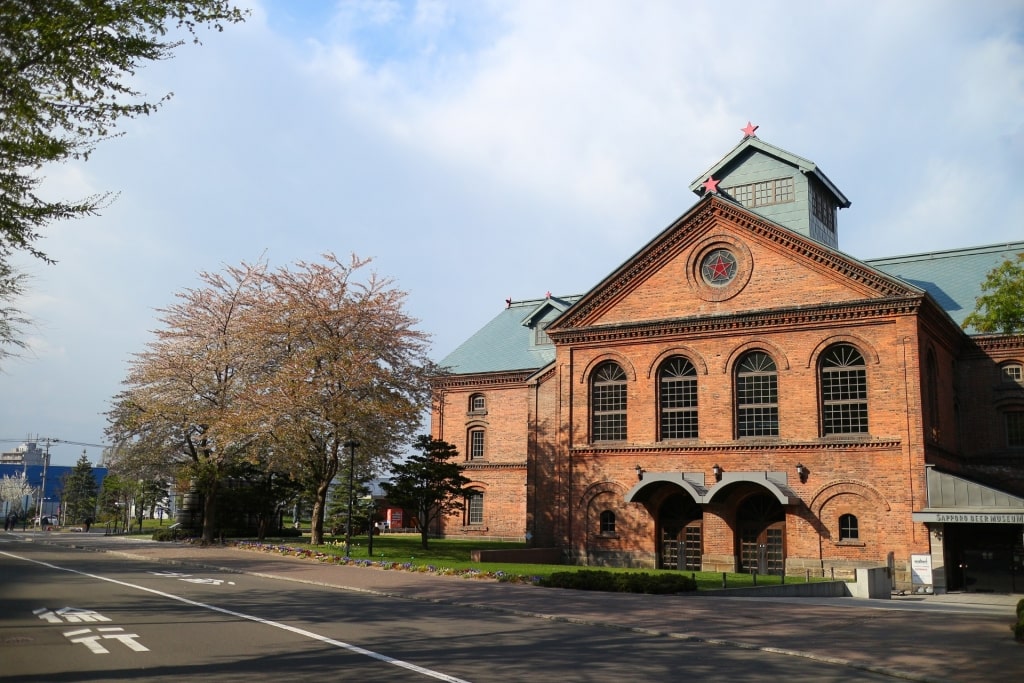
Sapporo Beer Garden
Sapporo is renowned for its incredible seafood and thirst-quenching beer. You can visit the Sapporo Beer Museum (beer got its start in Japan in the region during the late 1800s) and of course, the lively Sapporo Beer Garden.
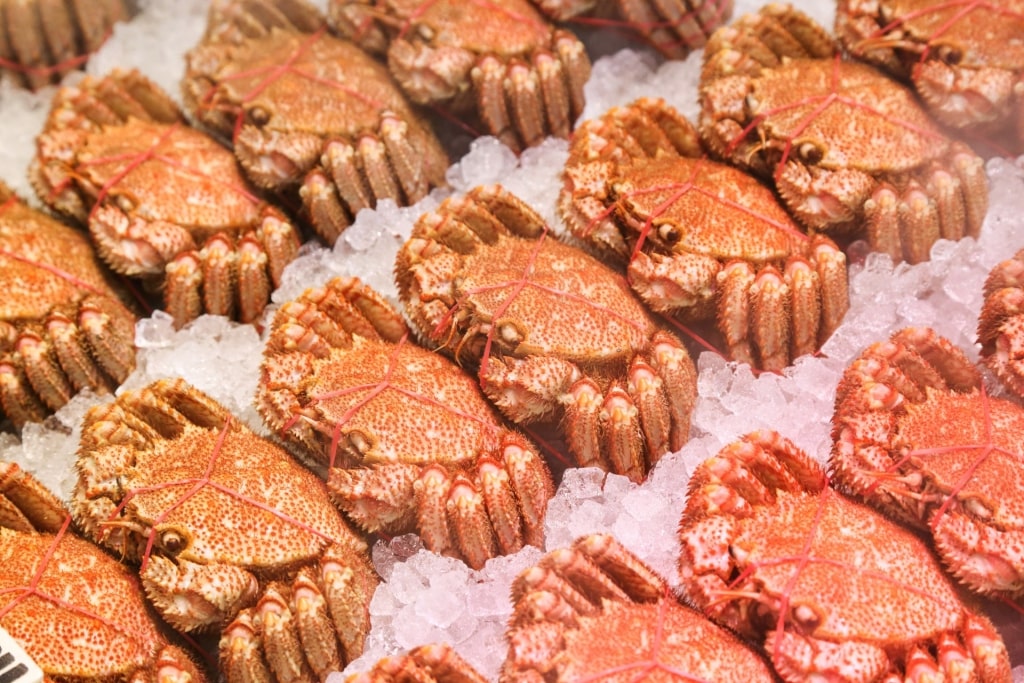
Hairy crabs
Head to Nijo Market for hairy crabs, a popular treat in these parts. You can also stop by one of the many crab restaurants in the city to crack some crustaceans open for yourself.
If you’re on the prowl for karaoke spots, cool bars, and shopping that Japan is known for, Sapporo’s Susukino district is the place to go.
In Susukino, you can sample some steaming noodles along Ramen Yokocho, or “Ramen Alley,” hit a pachinko (gambling arcade games) parlor, or stop by a music venue for some tuneful entertainment, like jazz.
Hakodate
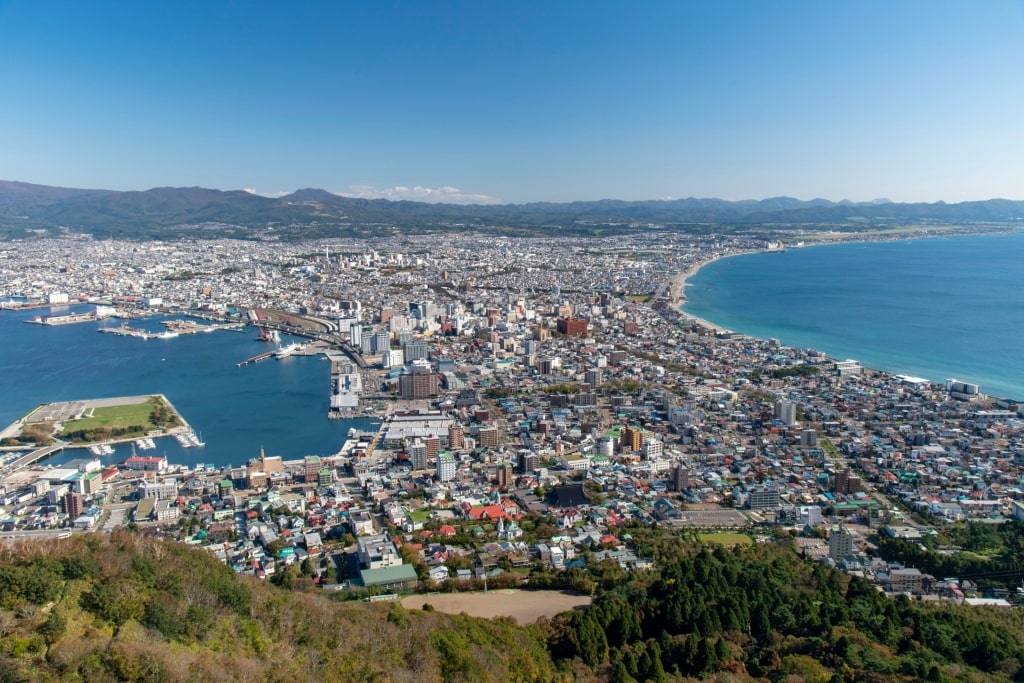
Hakodate
Hakodate, to the south of Sapporo, is another great northern Japanese city you should consider exploring.
Some of the attractions you don’t want to miss include the 10,961-foot-tall Mount Hakodate (accessible by vehicle, ropeway, or on foot along a forest trail), with splendid views of the city and surrounding peninsula.
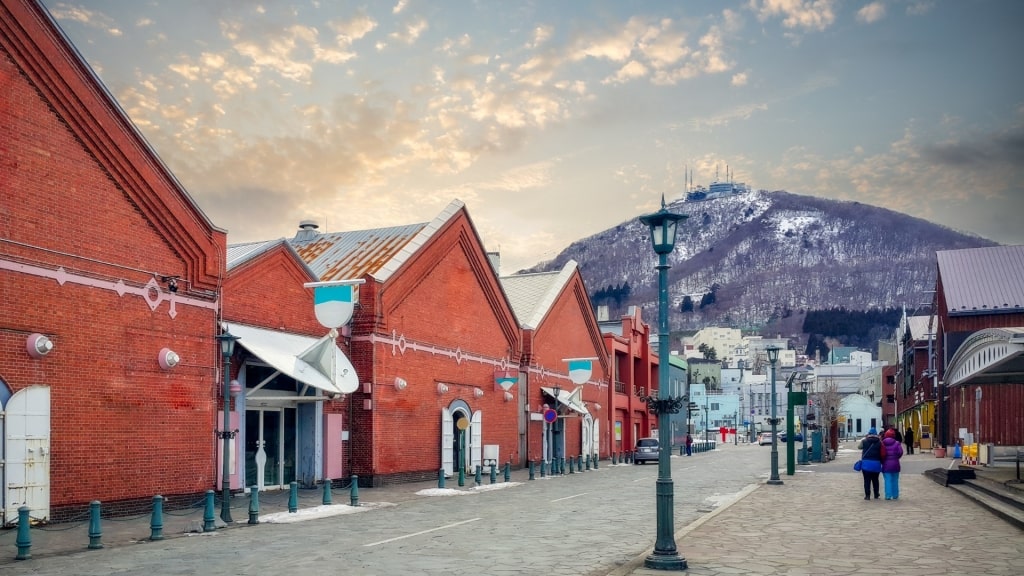
Kanemori Red Brick Warehouse, Hakodate
Another must-see is the Kanemori Red Brick Warehouse zone, with its iconic brick buildings, which saw some of Japan’s earliest international trade. This warehouse complex, with its cafés and trinket shops, is a great spot for meandering around the port, next to the icy cold water.
You might consider wandering around Hakodate Asaichi Morning Market, too, open from 5 am until early afternoon.
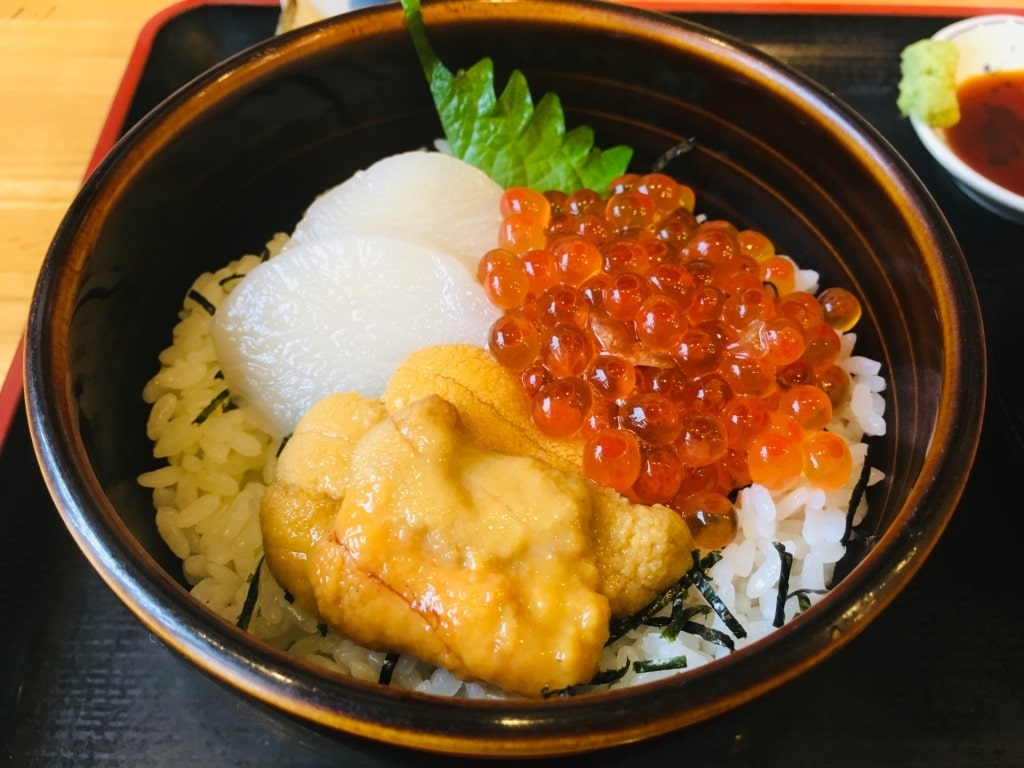
Seafood rice bowl
Tuck into the city’s celebrated seafood rice bowl here, pick up some souvenirs or try your luck at hooking a live squid swimming around a blue tank, which a chef will dispatch for you, then prepare as some extremely fresh squid sashimi.
Hiroshima
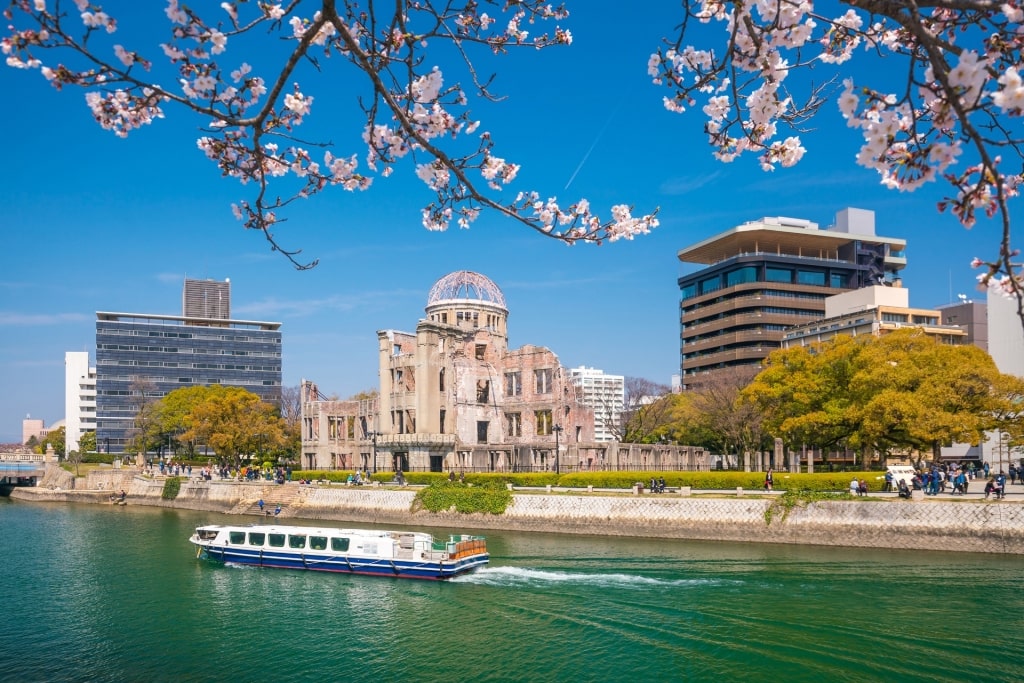
Hiroshima
Hiroshima numbers among the best cities in Japan to spend time in for two main reasons; to experience its rich cultural heritage, and to understand more about the region’s tragic mid-20th century history.
The name Hiroshima often sticks in people’s minds due to the atomic bomb dropped on the city during the Second World War. The death and horrific destruction the nuclear denotation brought down upon the city lives on in the memories of Hiroshima’s residents to this day.
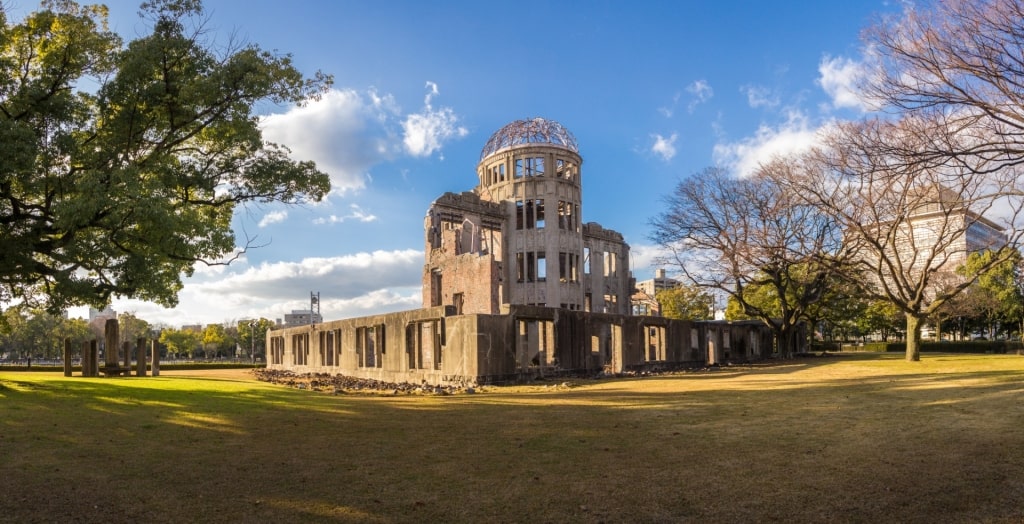
Atomic Bomb Dome, Hiroshima
You can visit the Atomic Bomb Dome, Hiroshima Peace Memorial Park, and the Hiroshima Peace Memorial Museum, where you’ll learn more about the terrible costs of nuclear war, and its aftermath.
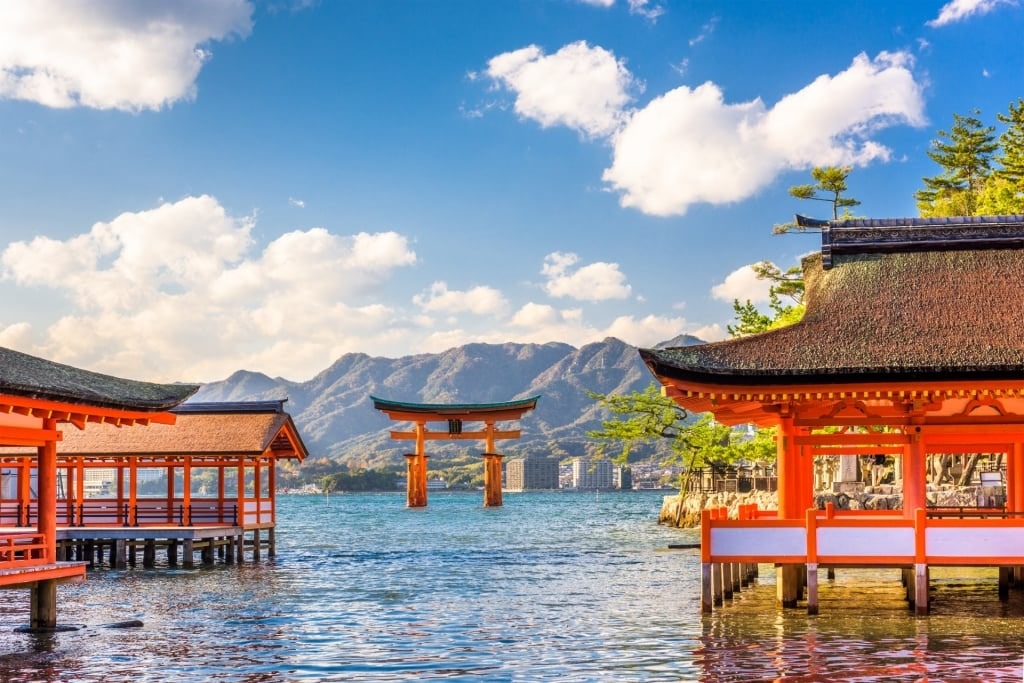
Itsukushima Shrine in Miyajima Island, Hiroshima
On the heritage side of the equation, beautiful locations, like the Buddhist Daishō-in Temple Complex on Miyajima Island, as well as the Japanese landmark Itsukushima Shrine and Torii Gates (also on the island), are definitely worth exploring.
The city’s towering timber and concrete-built Hiroshima Castle, with carp swimming through its defensive moat, was reconstructed after the war and is another spot you don’t want to pass by.
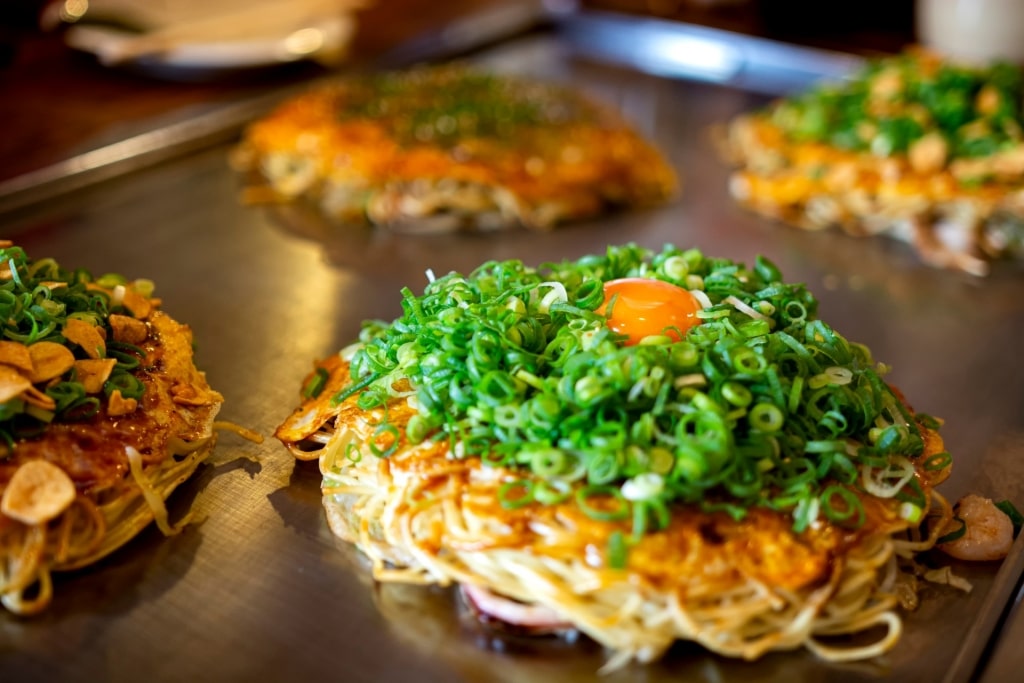
Okonomiyaki
Hiroshima Japanese does okonomiyaki, a kind of fried egg-batter cabbage and noodle omelet or pancake (with lots of other savory ingredients) better than any other town in Japan—with the possible expectation of Osaka.
Trying okonomiyaki is one of the best things to do in Hiroshima, so make sure you taste some while you’re in town.
Aomori
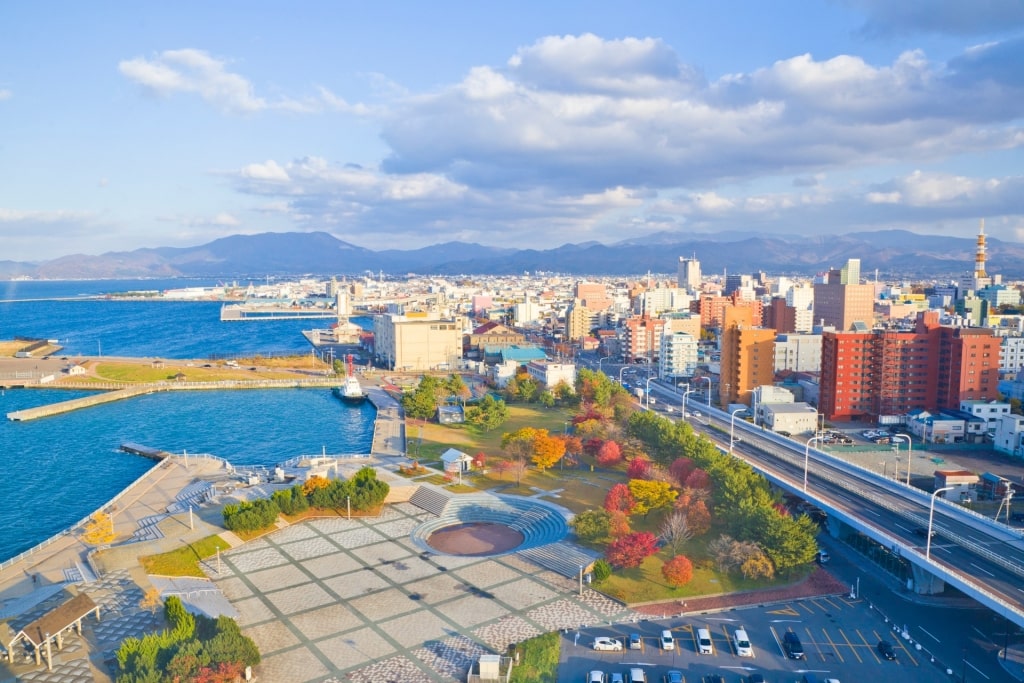
Aomori
Aomori, on the northern tip of Honshu, is a city surrounded by incredible nature, and apple orchards galore, making it the perfect staging area for exploring this part of Japan.
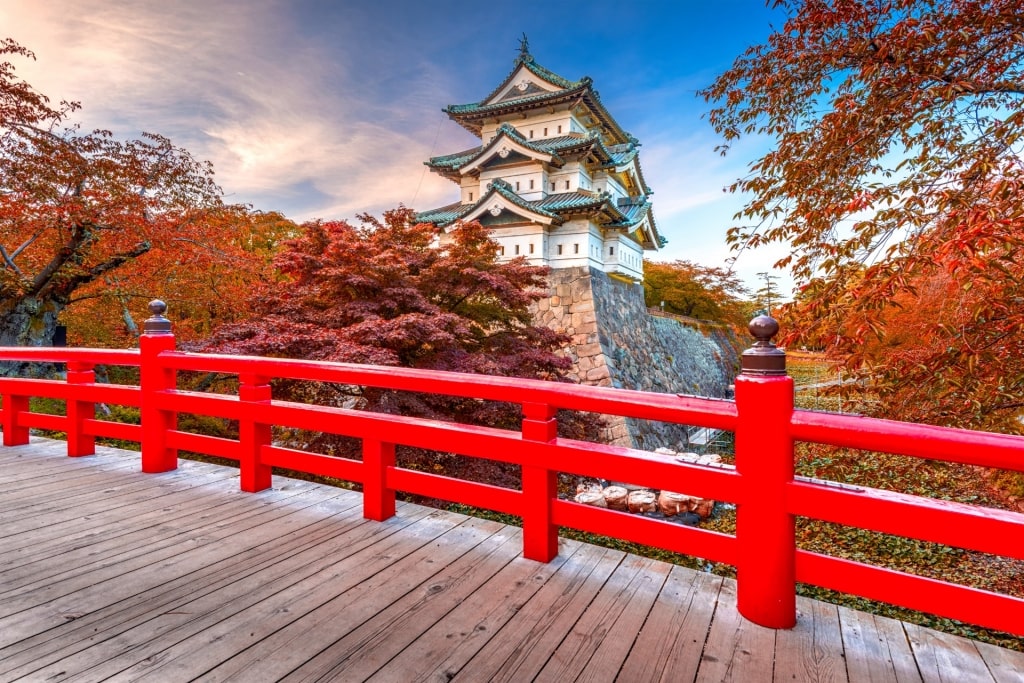
Hirosaki Castle, Aomori
Close to Aomori, you’ll encounter the gorgeous three-level Hirosaki Castle, constructed in 1611, and Hirosaki Castle Botanical Garden, with thousands of cherry blossom trees, many overhanging the castle moat. Hirosaki Park makes for a lovely spot for an afternoon stroll.
If art beckons to you, in the city proper you’ll find the Aomori Museum of Art, with an emphasis on the work of local artists inside. The municipality is also home to the Nebuta Museum WARASSE, which focuses on the summertime Aomori Nebuta Festival and the celebration’s elaborate floats.
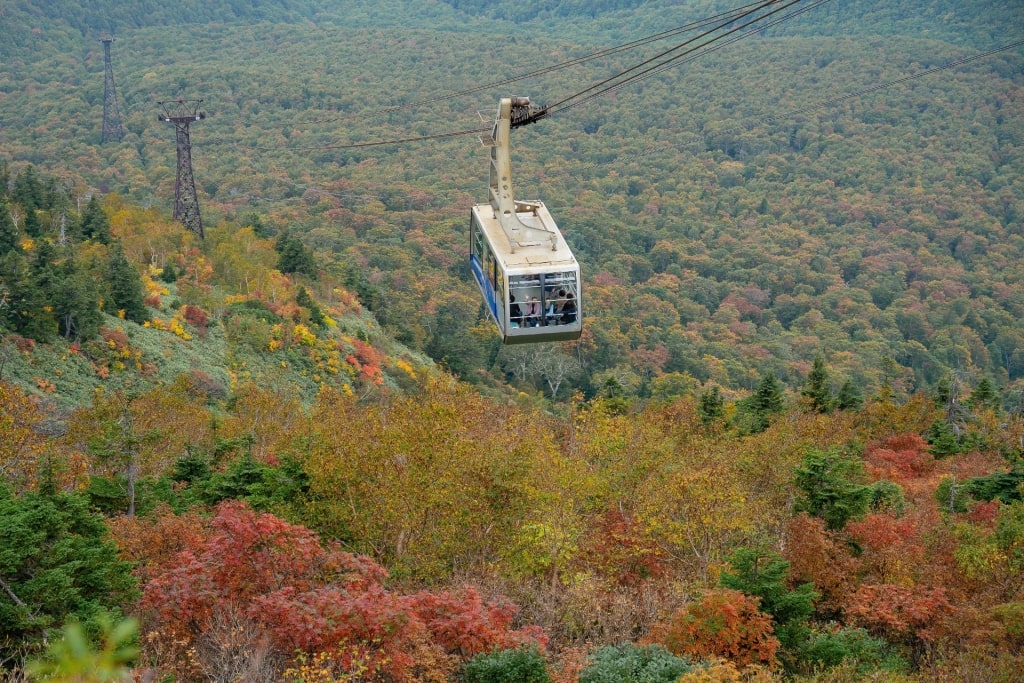
Hakkoda Ropeway, Aomori
Ascending Mount Tamoyachi via the Hakkoda Ropeway is an excellent way to take in the verdant, and sometimes snow-covered Hakkoda Mountain Range from above, and south of the city.
If a dip in a hot spring—after trekking through woodland paths—appeals, stop by the Sukayu Onsen, also in the Hakkoda Range, during your alpine ambles. The onsen, with hundreds of years of “steamy” history behind it, is perfect for a good and relaxing thermal soak.
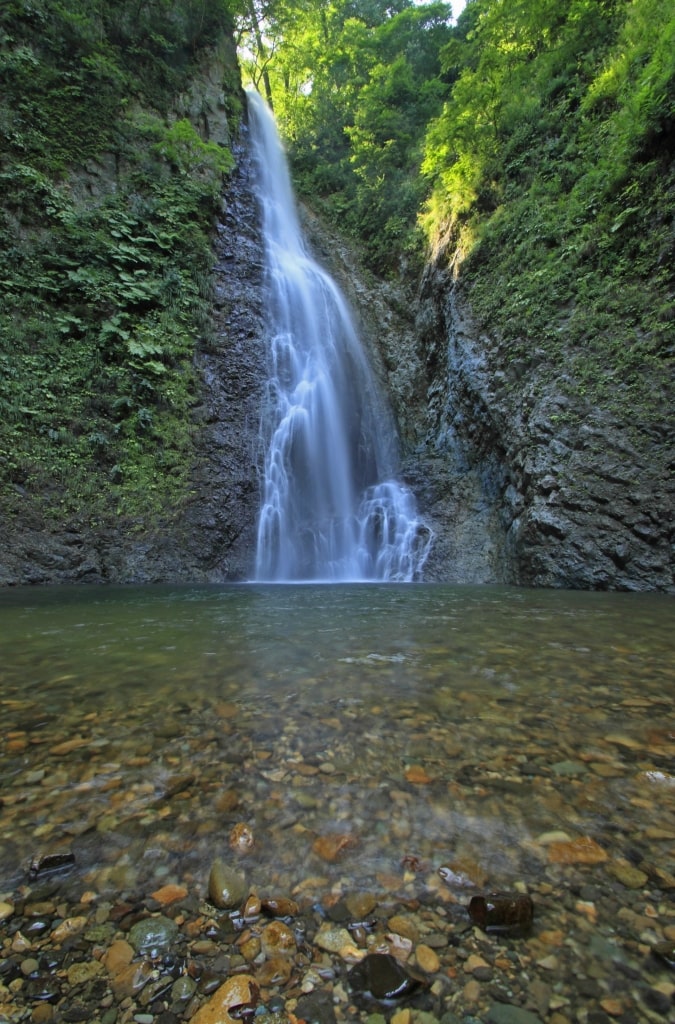
Anmon-no-Taki Falls, Aomori
You can visit the lush Shirakami-Sanchi Mountains, to the west of Aomori, during your stay as well. These Japanese mountains are home to a large, old-growth beech forest, plus the three-tier Anmon-no-Taki Falls.
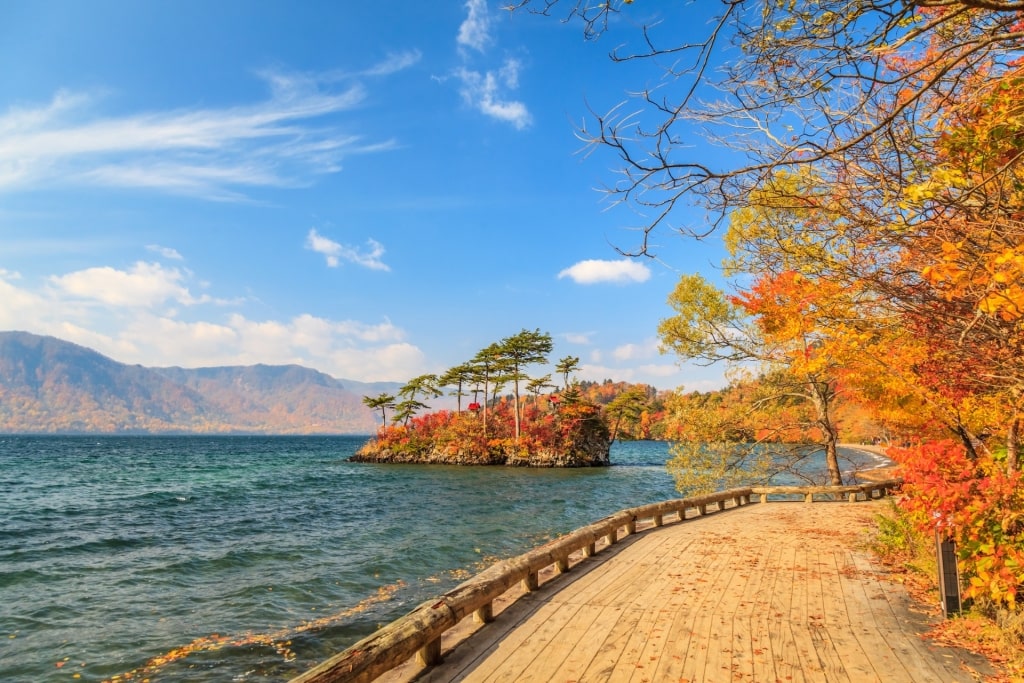
Lake Towada, Aomori
Lake Towada, a majestic-looking crater lake, and the ancient Shinto Towada Shrine, located on the lake’s Nakayama Peninsula and surrounded by soaring cedar trees, are two more divine regional destinations.
Both are less than an hour and a half south of the city and are places to see while staying in Aomori.
Naha and Okinawa City
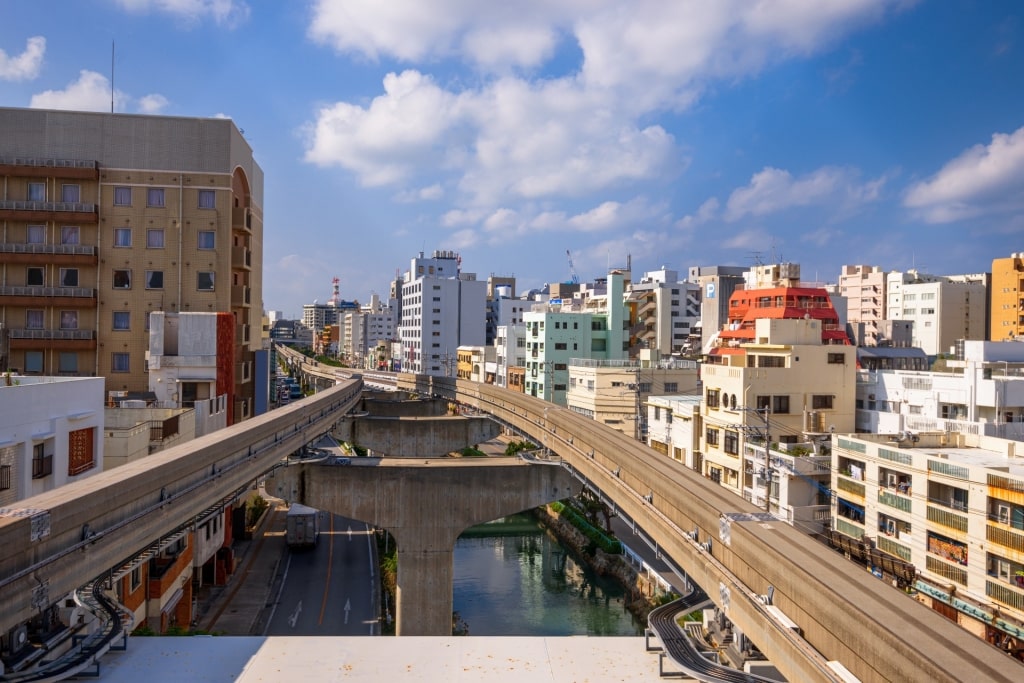
Naha
Heading south to Okinawa, once known as the Ryukyu Kingdom, Naha and Okinawa City are unquestionably two of the best towns you can visit along Japan’s southern reaches. Leave the blazing neon lights and towering skyscrapers behind here for a more easygoing style of life.
Naha, great for dining out and shopping, is the largest city in Okinawa Prefecture, located on the main island of Okinawa. Okinawa City, on the same island, is the region’s second-largest urban center.
While Okinawa is legendary for its turquoise sea and pristine Japanese beaches, you’ll run into plenty of other interesting sites on the island to visit too. You’ll also notice a hefty dose of American culture here due to nearby military installations, like Kadena Air Base.
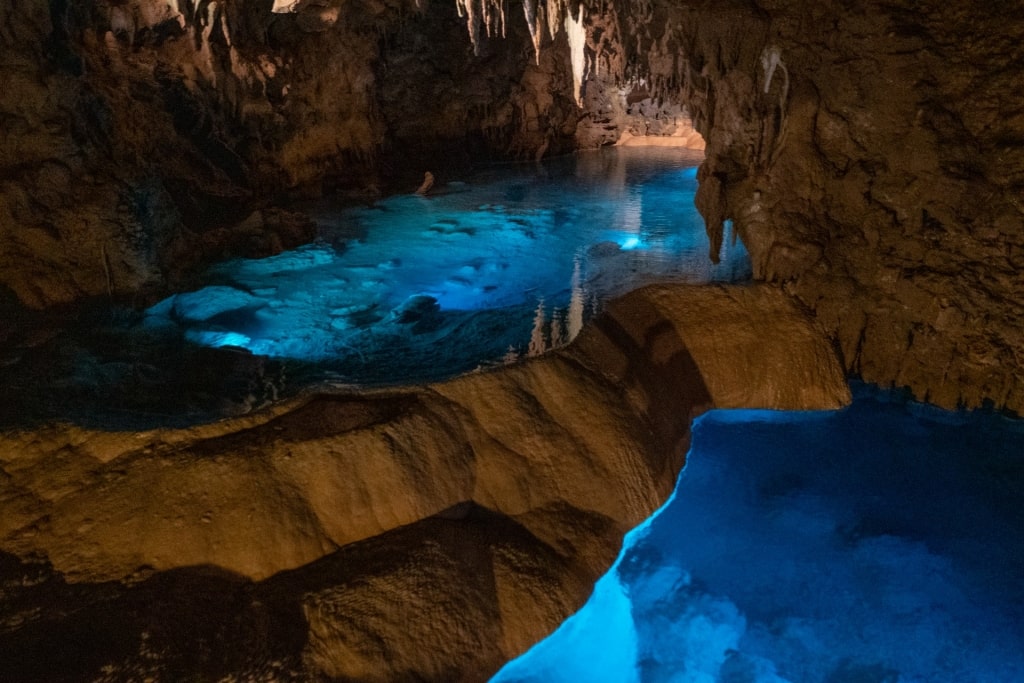
Okinawa World, Okinawa
Okinawa World theme park will give you a crash course in local culture and history. Stop by attractions like Kingdom Village, a recreation of an old-fashioned Ryukyu village, and Habu Park, featuring snake shows with the poisonous Habu snake. The subterranean wonder of the three-mile-long Gyokusendo Cave is also worth a stop.
A tramp up to the grassy hilltop ruins of Nakagusuku Castle, dating back to the 15th century, will give you a glimpse of what life must have been like when the Ryukyu Kingdom ruled these lands. The ruins will also afford you lovely vistas across Nakagusuku Bay.
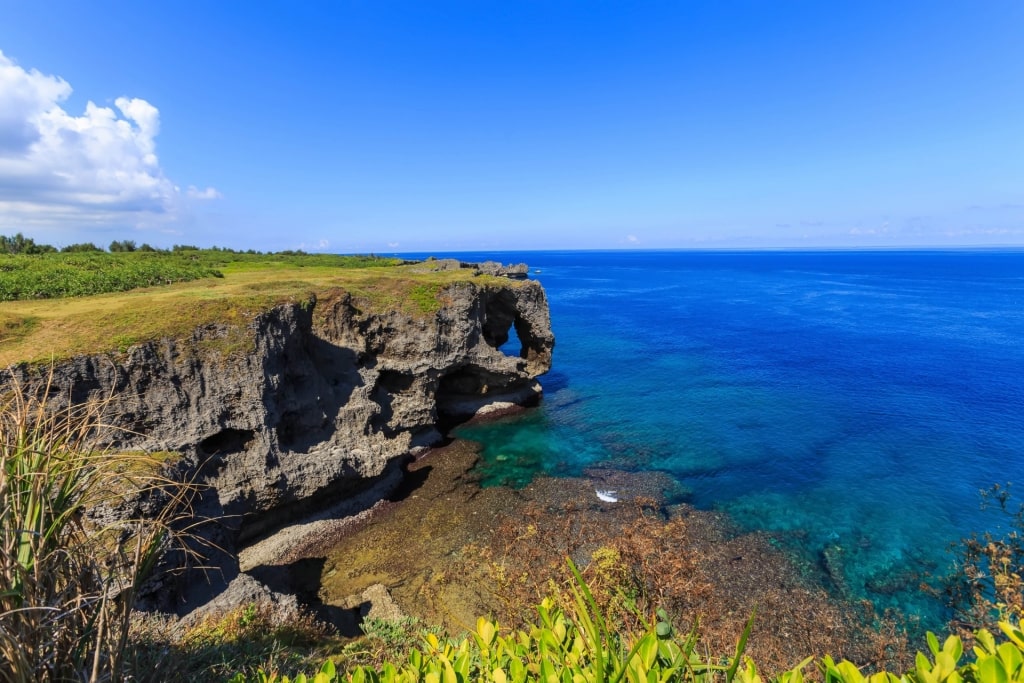
Cape Manzamo, Naha
If you’ve had enough beach time, go for a walk around Cape Manzamo. The cape comes with elevated rocky plateaus, cliffs, and outstanding views over the East China Sea’s crashing waves.
Read: Best Beaches in Okinawa
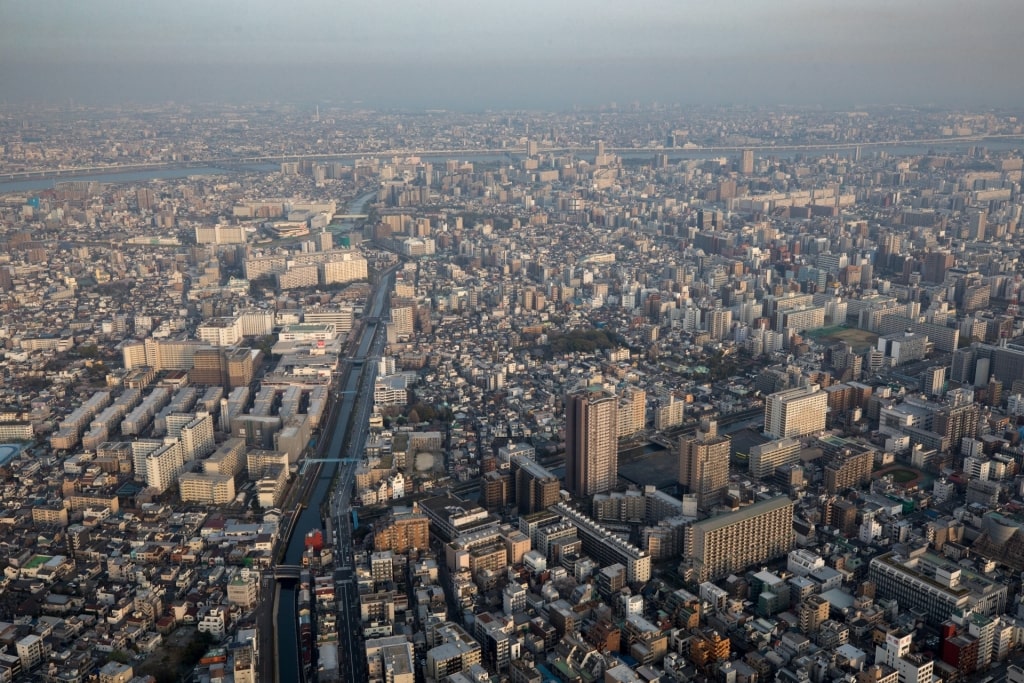
Tokyo
Book a cruise to Japan with Celebrity Cruises to discover this archipelago’s mesmerizing urban landscapes and surrounding nature.
